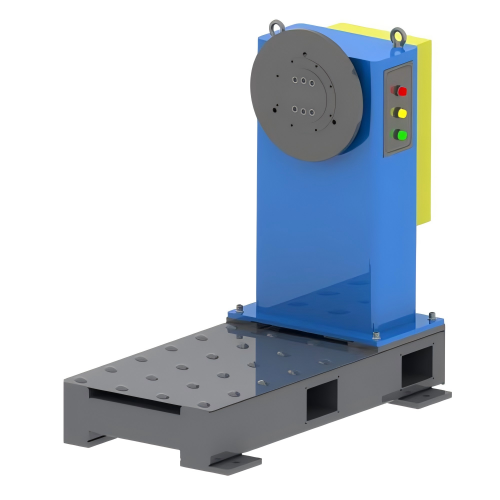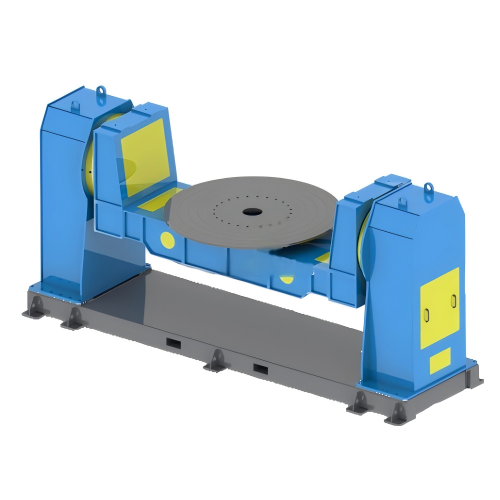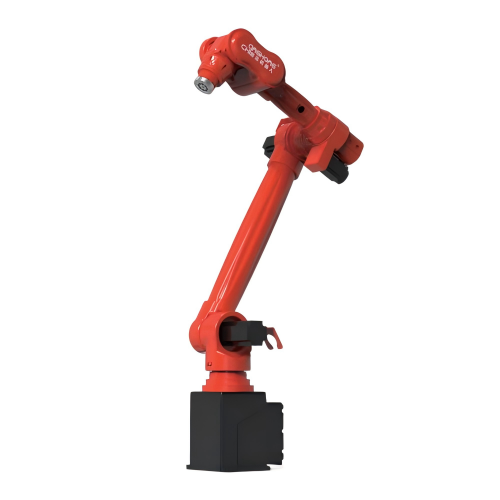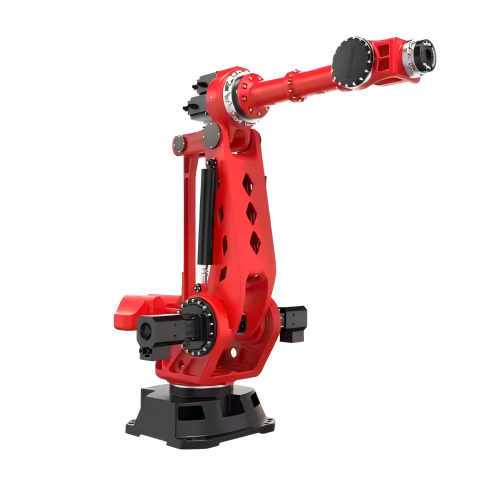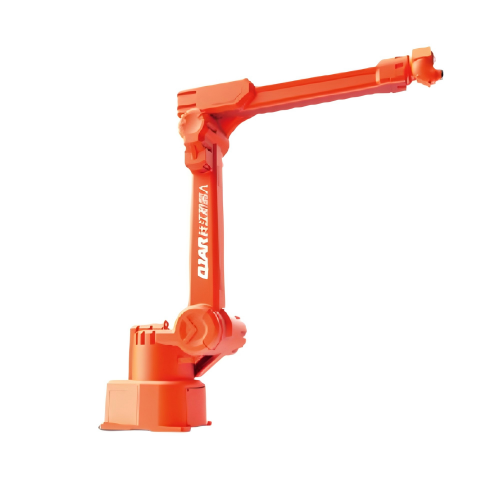
- Wenling Zhejiang Čína
- [email protected]
- +86 18958695512
- Domov
- PRODUKTY
- PRIEMYSELNÝ ROBOT
- ZVÁRACÍ ROBOT
- Stránky
- Zváracie robotické rameno shenchi QJR-1400Hexcellent zvárací robot
Zváracie robotické rameno QJR6-1400H Vynikajúci zvárací robot

Vlastnosti produktu:
vysoká rýchlosť a stabilita,
nízky výkon na všetkých osiach,
jednoduchá konštrukcia zariadenia,
používané hlavne na oblúkové zváranie,
s vysokou spoľahlivosťou a vynikajúcim pomerom ceny a kvality.
Duté konštrukčné ramená a zápästia, vstavaný zvárací kábel,
schopný vykonávať zvárací postup v úzkom priestore, veľmi ľahký
vhodné pre nábytkársky, potravinársky a nápojový priemysel, 3C a ďalšie odvetvia na dosiahnutie vysokorýchlostnej a vysoko presnej paletizácie, vychystávania, balenia, manipulácie, nakladania a vykladania
QJR6-1400H
ČÍNA
30 DNÍ
DPH
NINGBO/ŠANGHAJ ČÍNA
| Číslo osi | 6 |
|---|---|
| Užitočné zaťaženie | 6 kg |
| Opakujte umiestnenie | ±0,03 mm |
| Maximálny rozpätie paží | 1441 mm |

V dnešnom pokročilom výrobnom prostredí sa automatizácia stala kľúčom k zlepšeniu produktivity a kvality výrobkov. Spomedzi rôznych automatizačných technológií sú zváracie roboty kľúčové pre odvetvia ako automobilový priemysel, letecký priemysel, ťažká technika a všeobecná výroba. Robot môže výrazne zvýšiť efektivitu vašej výroby, znížiť náklady na pracovnú silu a zabezpečiť konzistentnú kvalitu zvarov. Avšak s mnohými typmi robotov a dodávateľmi na trhu môže byť rozhodnutie ohromujúce. Táto príručka vám pomôže pochopiť kritické faktory, ktoré treba zvážiť pri výbere... zvárací robot.
1. Definujte svoje požiadavky Prvým krokom je jasne pochopiť potreby vašej aplikácie. Nie všetky zváracie roboty sú vhodné pre každú úlohu. Položte si otázku:
Aký typ zvárania potrebujete? (MIG, TIG, bodové, oblúkové, plazmové atď.)
Aké materiály budete zvárať? (Mäkká oceľ, nehrdzavejúca oceľ, hliník atď.)
Aká je hrúbka a veľkosť komponentov?
Aké sú typy spojov? (Tupový, prekrývajúci sa, rohový, zaoblený)
Aký je objem výroby a doba cyklu?
Objasnenie týchto parametrov zúži vaše možnosti a pomôže vám vybrať robota prispôsobeného vášmu procesu.
2. Vyberte si správne robotické rameno Robotické rameno, známe aj ako manipulátor, sa musí vybrať na základe dosahu, užitočného zaťaženia a požadovanej presnosti.
DosahUistite sa, že rameno robota má dostatočný dosah na pokrytie celej zvarovej plochy.
Užitočné zaťaženieMal by podopierať zvárací horák, káble, senzory a pomocné nástroje.
Sekery6-osový robot ponúka väčšiu flexibilitu a je vhodný pre zložité zvarové dráhy.
OpakovateľnosťHľadajte vysokú opakovateľnosť (napr. ±0,03 mm), aby ste zabezpečili konzistentnú kvalitu zvaru.
3. Kompatibilita zdroja zváracieho prúdu a zariadenia Robot nemôže optimálne fungovať bez kompatibilného zdroja zváracieho prúdu. Vyberte si robotický zvárací systém, ktorý sa bezproblémovo integruje s:
Zvárací stroj a napájací zdroj
Robotická baterka
Podávač drôtu
Chladiaci systém
Uistite sa, že zváracie zariadenie je spoľahlivé a navrhnuté pre automatizované procesy.
4. Jednoduchosť programovania a softvéru malo by byť ľahko programovateľné, najmä pre výrobcov s obmedzenými skúsenosťami v robotike. Zvyčajne existujú dve metódy programovania:
Výučba programovania príveskovOperátor vedie robota pomocou ručného zariadenia.
Offline programovanie: Pred prenosom do robota použite počítačový softvér na simuláciu a vytvorenie zvarových dráh.
Offline programovanie je ideálne na skrátenie prestojov a optimalizáciu produktivity.
5. Integrácia s vašou výrobnou linkou Zhodnoťte, či je možné zvárací robot integrovať s vaším existujúcim zariadením a automatizačnou linkou. Zvážte pridanie:
Polohovacie zariadenia alebo upínacie prípravky na manipuláciu s dielmi
Senzory alebo kamerové systémy na sledovanie švov
Dopravníkové systémy na automatické nakladanie a vykladanie dielov
Systémy na zber a monitorovanie údajov pre kontrolu kvality
6. Bezpečnostné prvky a súlad s predpismi by mali spĺňať medzinárodné bezpečnostné normy, ako napríklad ISO 10218. Hľadajte roboty s:
Bezpečnostné ploty a ohrady
Tlačidlá núdzového zastavenia
Svetelné závesy
Dokumentácia o posúdení rizík
Bezpečnosť je nevyhnutná na ochranu operátorov a zabezpečenie hladkej prevádzky.
7. Údržba a popredajná podpora Dobrý dodávateľ ponúka viac než len hardvér. Vyberte si dodávateľa, ktorý ponúka:
Inštalácia a nastavenie na mieste
Školenie pre operátorov a programátorov
Technická podpora a riešenie problémov
Dostupnosť náhradných dielov a servisných služieb
Popredajná podpora zaisťuje dlhodobý prevádzkový úspech a minimalizuje prestoje.
8. Náklady a návratnosť investícií (ROI) Hoci cena je kľúčovým faktorom, celkové náklady na vlastníctvo zahŕňajú inštaláciu, zaškolenie, údržbu a prevádzku. Zhodnoťte:
Životnosť a záruka robota
Spotreba energie a prevádzkové náklady
Zvýšenie produktivity a úspora nákladov na pracovnú silu
Vypočítajte návratnosť investícií porovnaním počiatočnej investície s prínosmi v priebehu času.
9. Škálovateľnosť a budúce aktualizácie Vyberte si systém, ktorý môže rásť s vaším podnikaním. Škálovateľný zvárací robot dokáže:
Nové zváračské úlohy
Aktualizácie softvéru
Integrácia s ďalšími robotmi alebo automatizačnými systémami
Investovanie do flexibilnej platformy zabezpečuje prispôsobivosť meniacim sa požiadavkám trhu.
10. Reputácia dodávateľa a skúsenosti v odvetví Spolupracujte so skúsenými a renomovanými dodávateľmi. Preskúmajte ich výsledky, prečítajte si recenzie zákazníkov a zhodnoťte ich schopnosť poskytovať riešenia na mieru. Dôveryhodný dodávateľ vás prevedie celým procesom od konzultácie až po podporu po inštalácii.

Spoločnosť SHENCHI ROBOT CO., LTD. poskytuje rôzne priemyselné roboty s automatizačnými riešeniami. Podporujeme priemyselné roboty vrátane zvárania, lakovania, manipulácie, paletizácie, ohýbania a leštenia, neváhajte nás kontaktovať.
Shenchi robot, inteligentnejší a jednoduchší
KONTAKTUJTE NÁS
© Spoločnosť Shenchi Všetky práva vyhradené.

